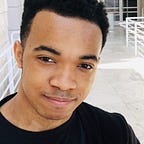Comics are Dead, Long Live Manga
The West found its comfort zone in superhero stories and hasn’t budged since
Something interesting has been happening in the publishing world as of late. For the months of April, May, and June, NPD Bookscan’s Top 20 Adult Graphic Novels lists were completely dominated by Japanese manga. There wasn’t even a single American comic or graphic novel listed.
We finally saw some Western graphic novels in July’s list, but the majority of the top 20 were still manga. The top 20 list for August is bound to come out any day now, and my bets are on manga occupying the majority of the slots yet again.
Anime and manga have gotten absurdly popular in the West over recent decades, but I never thought I would ever see manga completely eclipse Marvel and DC comics. While I can’t claim to be an all-knowing paragon of wisdom, I can give you my own reasons for why I’ve slowly dropped comic books in favor of the smooth, black and white panels of manga.
Three kids and a cul-de-sac
I’ve always loved art. I love Caravaggio’s paintings, Michaelangelo’s sculptures, and Bach’s concerto’s. I could talk at length about the greatness of the Rape of Persephone, or the Pieta. My love of art comes from my childhood, starting with cartoons, of all things.
I used to watch shows like Ed, Edd, n’ Eddy religiously as a child. At first, I only understood the show as mindless entertainment, but as I got older, I found myself paying attention to things such as the unique art style, the jazzy soundtrack, and the legendary sound effects the show had.
After Ed, Edd, n’ Eddy concluded, it eventually stopped airing on Cartoon Network altogether, and in return, I stopped watching the channel. It wasn’t just because a childhood favorite of mine wasn’t airing, but because I realized I genuinely didn’t like the art styles of the other shows on offer.
That’s where anime and manga came in.
“Okay, three, two, one, let’s jam”
Have you ever seen the opening for Cowboy Bebop? If not, you need to watch it. Cowboy Bebop manages to pack so much style and energy into an opening that’s less than two minutes long. I got my first taste of jazz through this show’s opening when I was a kid and the theme song has stuck with me ever since.
It’s not just Cowboy Bebop. I can name dozens of other shows that all have great intros and outros with phenomenal theme songs to match. Shōwa Genroku Rakugo Shinjū is another show with a beautiful, jazzy opening. Samurai Champloo uses the lo-fi hip hop of Nujabes along with a visual art style inspired by classic Japanese art. Fooly Cooly is an absurdly whacky, sex-fueled coming-of-age drama with an entire soundtrack full of songs by The Pillows, a Japanese 90’s rock band.
I haven’t even began talking about the actual storylines of these shows, because I really don’t have to. What I learned from experiencing the strange, yet exciting world of anime is that art and presentation matter. Aesthetic matters. Making your audience wonder what they’re about to walk into is the most important thing for any piece of art to accomplish, and many of the titles that have that effect on me are coming out of Japan.
It all looks the same to me
What’s wonderful is that no anime or manga has the same art style as another. Each manga artist has their own paneling, shading, and framing techniques. Each animation studio has its own visual flair and directing style, and that was sorely missing from the cartoons I watched as a kid.
It felt as though every cartoon character was drawn by the same handful of artists, even across different shows. On the other hand, starting a new anime or manga was like dropping into an entirely different world each time.
Can you name a single cartoon that has the smoky jazz lounge vibe of Cowboy Bebop, or anything that comes close to the futuristic dystopia of Ghost in the Shell? I couldn’t, and apparently, neither could millions of other people starving for more diverse storylines and art styles.
The Art of Curiosity
I’m sure I’ve only scratched the surface, but my point is this; the West doesn’t fully grasp the art of curiosity like Japan does. What does that mean, exactly? Well, I’m sure you took a good look at the image to the side and wondered to yourself, ‘Who is she? What happened to her? What is this show about?’.
Making the audience ask questions, making them do a double take on a key frame, inspiring them to delve deeper and watch your show or pick up your graphic novel. That’s the art of curiosity.
Most of the Western comics you pick up are going to be about superheroes and villains in an already well-established, cinematic universe like Marvel or DC. ‘Capeshit’, as it’s so flatteringly called online. The West found its comfort zone in superhero stories and hasn’t budged since.
Japan dared to experiment. Sure, there have been many flops like the absolutely atrocious Berserk 2016, or the offensively terrible Redo of a Healer. But experimentation is what brought us the unique worlds of Naruto, Attack on Titan, Fullmetal Alchemist, and so much more. Each of them came with a distinct art style, aesthetic, and story line.
I do hope Western comics and graphic novels bounce back, but it’s going to take a lot more than the millionth superhero story or the same, recycled art style to do that. Until then, manga will just continue to outsell Marvel and DC in their own market.
You have to experiment, you have to find your style, and most of all, you have to aim for our curiosity. You only have one shot. Don’t waste it.
